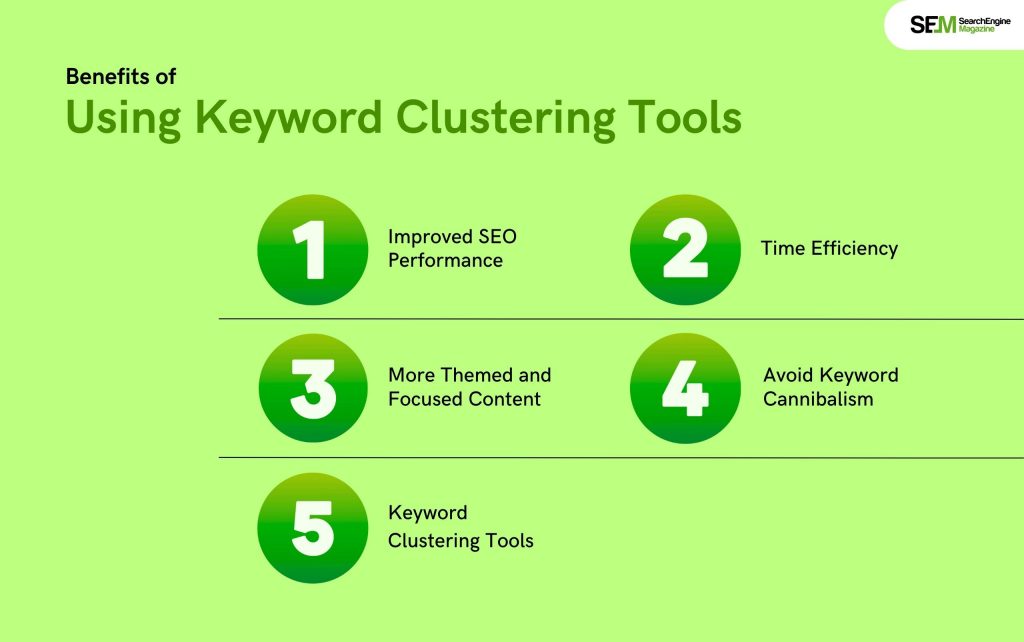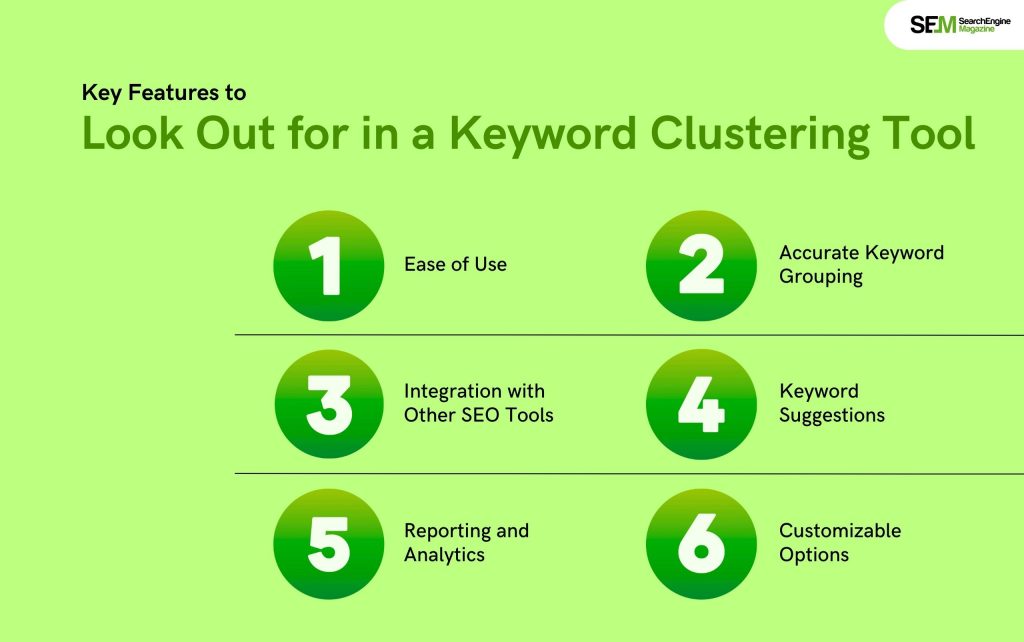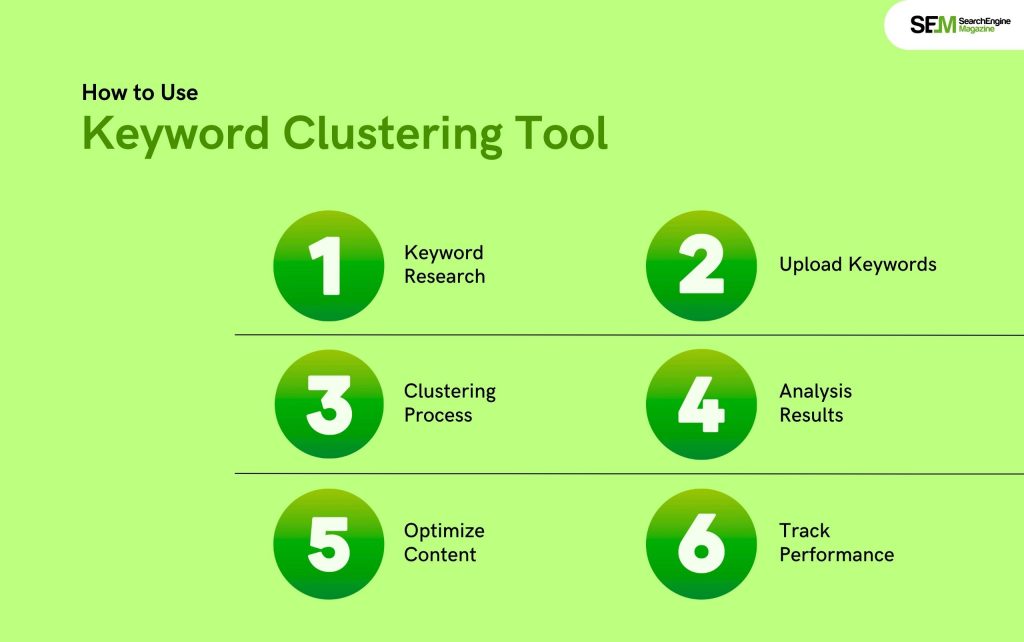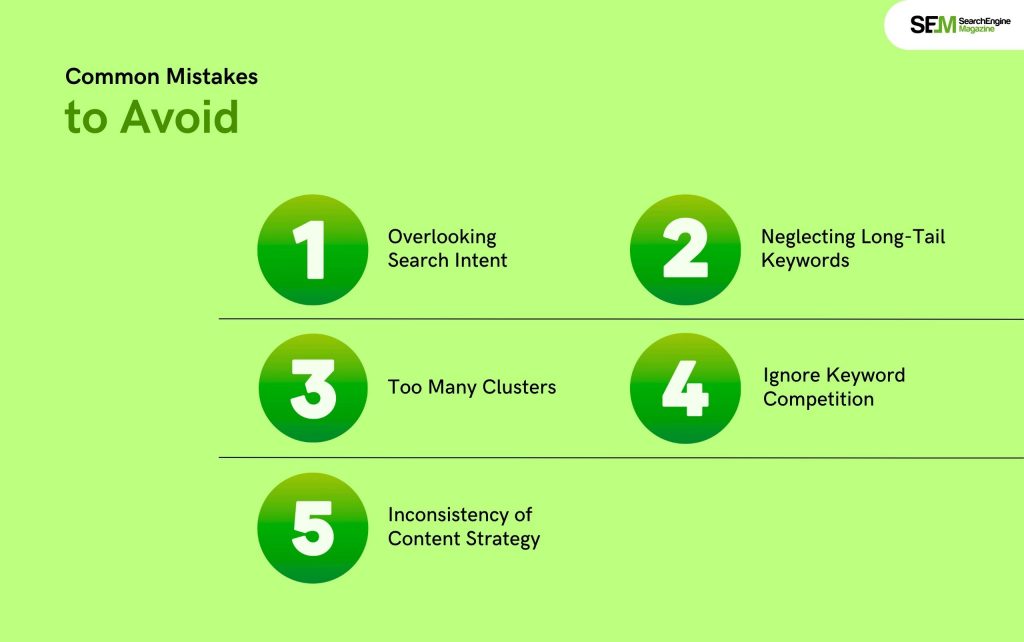Real Estate Link Building That Actually Works: Earn Local Authority, Rankings, and Better Leads Without Spam
Dec 10, 2025

Dec 10, 2025

Dec 10, 2025

Dec 09, 2025

Dec 09, 2025

Dec 05, 2025

Dec 05, 2025

Dec 04, 2025

Dec 04, 2025
Sorry, but nothing matched your search "". Please try again with some different keywords.


Keyword strategy is a very important part of digital marketing, and one of its most important components is keyword strategy.
A well-structured keyword strategy helps websites rank higher in search engine results pages by targeting relevant search terms.
But applying the keyword cluster strategy is not that easy. Rather, having a technical tool can come in handy.
Now, the market is filled with countless tools and apps for keyword clustering. So, marketers and businesses are often confused about which one to choose.
Well, no need to worry, I have brought a complete list of the best keyword clustering tools based on their functionalities, pros and cons lists, and more.
So, keep reading to know more!

Keyword Clustering is the process of taking related keywords and grouping them in semantic groups.
This means you’re arranging your keywords in a way that enables you to target associated terms within your content for higher chances of ranking in more searches.
Keyword clustering helps to optimize content for multiple relevant terms rather than a single keyword, thereby increasing the chances of the page ranking higher. This technique helps create comprehensive content that matches a user’s intent.

It will improve the user experience since organized content around keyword clusters allows for more holistic and relevant content aligned to the user’s search intent and leads to better engagement and higher user satisfaction.

Some of the things you’ll be looking out for are, therefore:
Effective features for SEO success of a clustering tool include ease of use, accuracy in grouping, and detailed reporting. Customizability is further helpful to adapt to different needs and preferences in ensuring that the tool matches the specific goals.
Now, from the millions of options available, I have curated the best 7 tools that offer the best keywords for topic clustering. So, just check out this list—
Starting the list with one of the most favorite tools of most marketers, Keywords Insights. It is highly popular in the digital marketing world for its extensive features — from keyword research to competitive analysis, it offers all kinds of tools.
In addition to this, its real-time SERPs keyword analysis allows users to find the ranking keywords and topic clusters. So, creating content around the topic cluster becomes easier.
Now, in the SEO field, Ahrefs holds a special place for its extensive set of tools and SEO practices. Making it an all-in-one OG tool for managing the SEO performance of any website.
Moreover, for keyword clustering, it employs the parent topic method. That is, it finds a parent keyword and then clusters related keywords around the parent topic. So, creating a hierarchy on the site for exploring related topics.
Unlike the other tools, Search Atlas is specifically designed for technical SEO, keyword research, and drafting a content strategy. So, in the case of keyword clustering, it researches through millions of related terms to provide a perfect framework for creating a hierarchy on the site.
In addition to this, it offers AI automation for content planning. So, it is easier to map out the keyword clusters for a methodical hierarchical structure of the site. This further helps in creating topical authority on the site with thematic content clusters.
One of the most liked platforms is KeyClusters for its topically related keywords that include local insights and intelligent grouping. Making it easier for marketers to plan the content cluster with the right keywords on the topic.
Moreover, the tool is popular for its multiple file formats in researching keywords and displaying them. So, users do not need to fret over the file format of the keyword clusters.
Next in line is Keyword Cupid with its AI-powered features that allow users to automate keyword clusters. That is, marketers and businesses can create the BIOD reports instantly without any manual effort.
Additionally, it creates visual clusters by grouping the charts with related keywords. Making the content planning simple and easy to follow. And, the AI features further fine-tune the structure through intelligent planning.
Similar to Ahrefs, SEMrush is another all-rounder SEO tool that gives a proficient platform for conducting keyword clusters for deep topic exploration. So, users can try its free version or the paid version to create a content map covering all the related keywords.
Moreover, its keyword clusters are more focused on user intent labeling. So, it groups related keywords based on their alignment with the user intent. Making the content angle niche-oriented and focused on exploring a single aspect of the user’s search intent.
Finally, ending the list with Surfer SEO, another popular tool in the digital space. But most of its popularity lies in its high-end keyword research, SEO audit, and keyword grouping to create topic clusters for in-depth content exploration.
In addition to this, it uses the content-first approach to find relevant keywords around a particular topic. Making it easier to create clusters that directly address the diverse nuances of a single content topic. So, the keyword cluster actually adds value to the content and keeps the audience engaged with the context.

The utilization of a keyword clustering tool is followed by the following steps:
Begin by gathering a list of keywords. This can be done using keyword research tools like Ahrefs, SEMrush, or Google Keyword Planner.
Input your list of keywords into the clustering tool (most tools accept CSV or TXT formats).
Automatically groups keywords for relevance with semantic meanings. There is a setting within tools whereby keyword difficulty and volume for searches could be readjusted to define more effective clusters.
After getting clusters generated through tools, look over these to see. You can check whether they hold up meaningful and match with user intent.
Develop content that is targeted to these clusters by mentioning the head topic of every cluster. Furthermore. Using variations and related terms in your content will help your overall representation of content.
Using SEO analytics, track how well your content performs for each keyword cluster. Additionally, you can make changes to your strategy accordingly.
Following these steps allows for a streamlined and effective process of utilizing keyword clustering tools. Analyzing and optimizing based on clusters can significantly improve your website’s SEO performance.

Here are a few common mistakes to avoid while using keyword clustering tools.
Keyword clustering tools group keywords based on relevance, but failing to consider user intent can lead to content that doesn’t match what people are actually searching for.
Long-tail keywords are often less competitive and more specific. Be sure to include them in your clusters to capture niche search traffic.
It’s tempting to create too many clusters, but too many can lead to overly specific or scattered content. Focus on a manageable number of well-targeted clusters.
Not all clusters will easily rank for. You really need to balance between volume and high competition keywords, as well as lower volume, less competitive keywords.
Even though you have clustering tools, align your efforts in content creation. See that your content is strategic and provides worth to the audience.
Avoiding these mistakes will make sure that your keyword clustering strategy stays focused and effective. By paying attention to search intent, competition, and long-tail keywords, your content will rank better in search rankings.
Keyword clustering tools are a powerful resource for any SEO strategy. By grouping keywords based on relevance, these tools allow marketers to create more targeted, comprehensive content that improves rankings and user engagement.
Whichever free or paid tool you may use, the proper clustering tool can make all the difference for your SEO. Avoid these common mistakes, keep focused on the intent of your user, and watch your content strategy come alive.

Real Estate Link Building That Actually Works...
Dec 10, 2025
Why Health-Conscious Consumers Choose Blockch...
Dec 10, 2025
How To Buy Xupikobzo987Model? Decoding The Mo...
Dec 09, 2025
Workplace Management EWMagWork: Is This Smar...
Dec 09, 2025
Social Media Stuff EmbedTree: Is This Digita...
Dec 05, 2025

